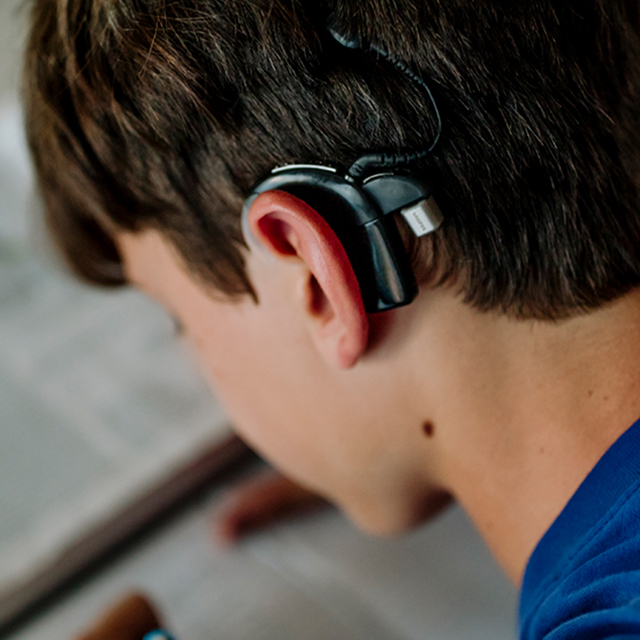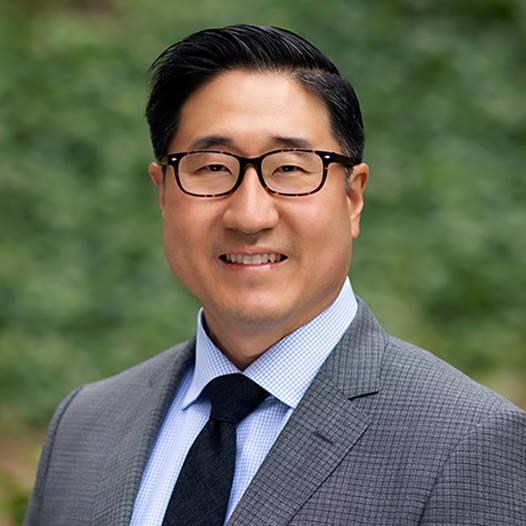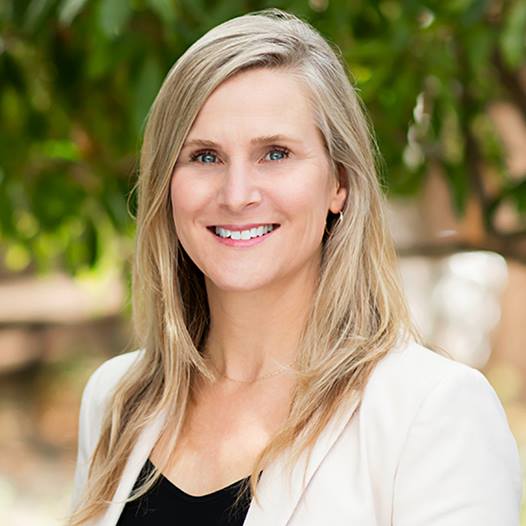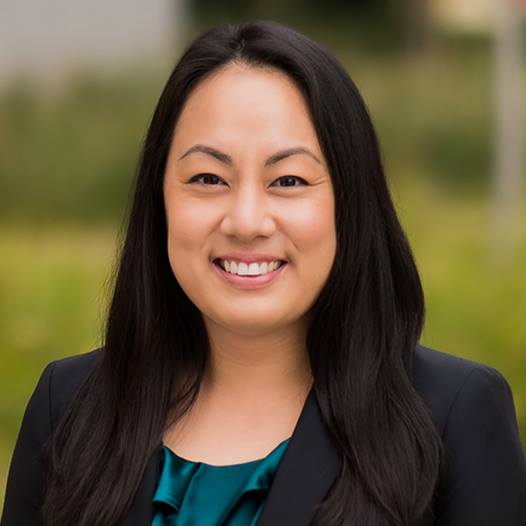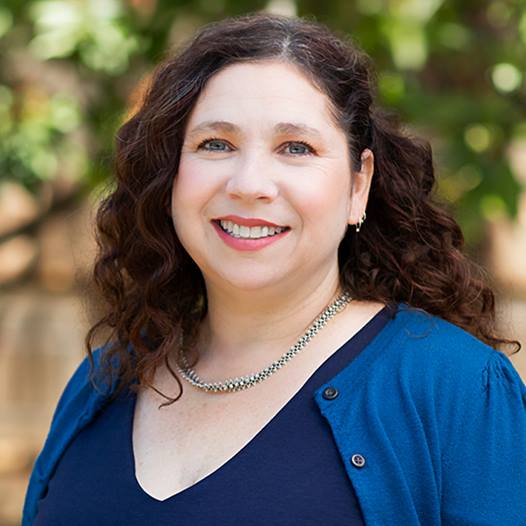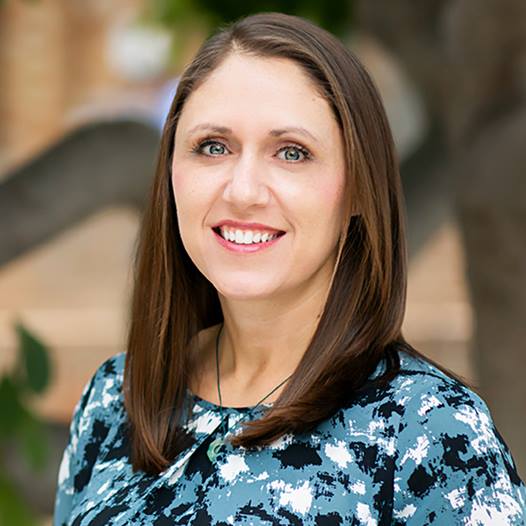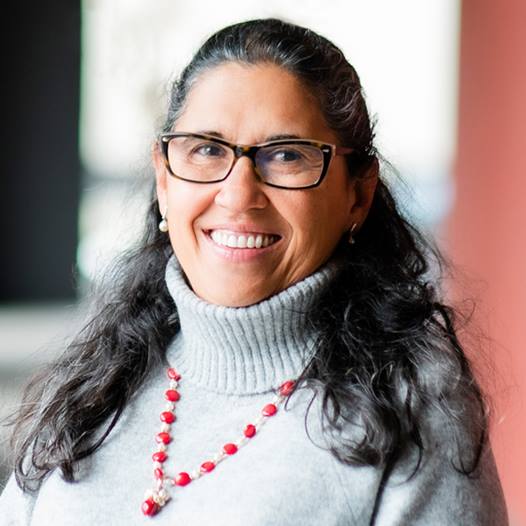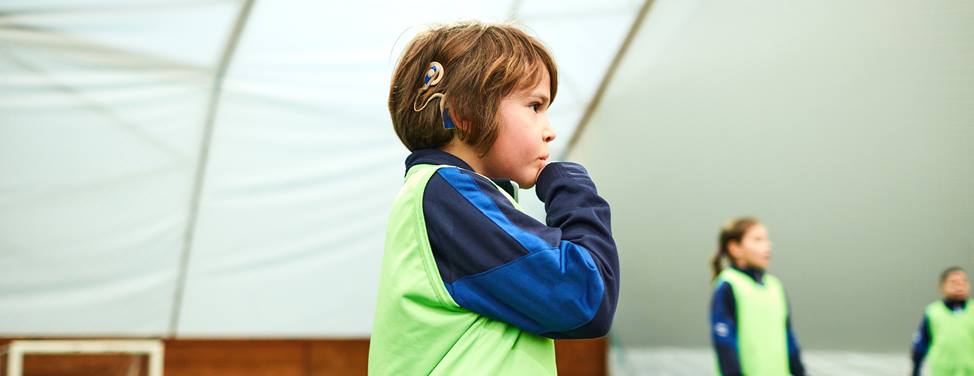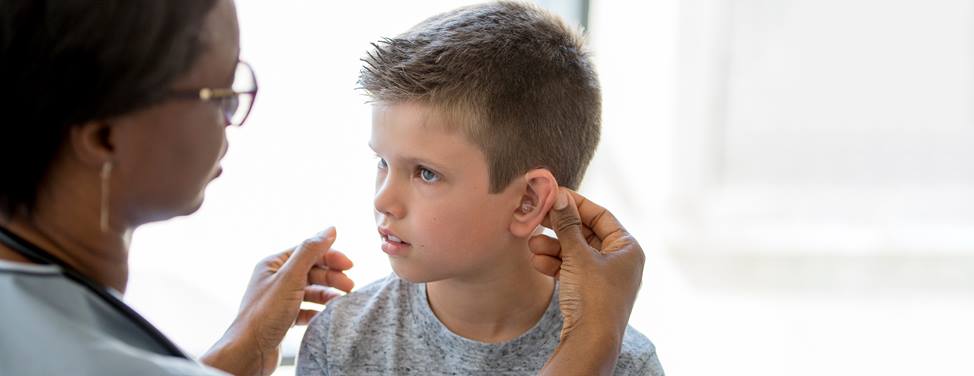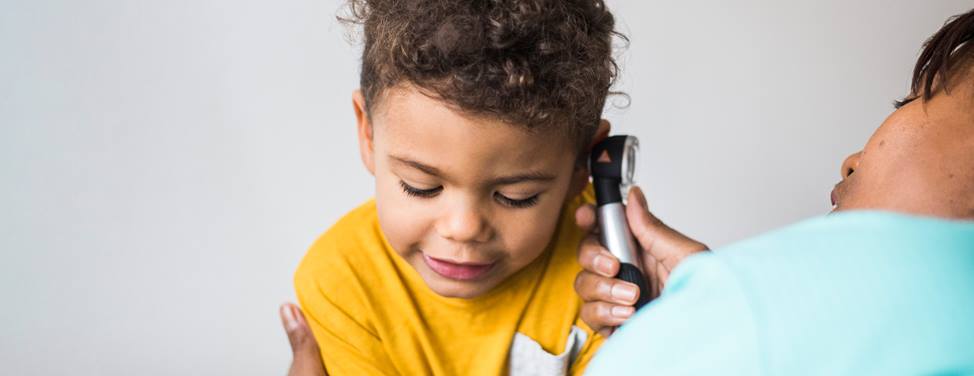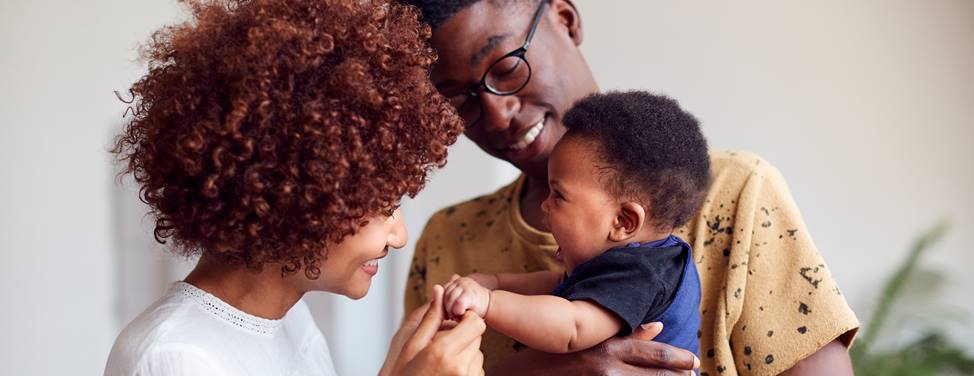A cochlear implant is a small electronic device that can help improve the hearing of children with severe, irreversible hearing loss. Although a cochlear implant doesn't restore normal hearing, it can allow a person to hear and understand more speech than was possible with a hearing aid. For a child, this could mean an opportunity to develop listening and speech skills and to attend school with hearing peers.
The device is surgically implanted in the inner ear and activated by a device worn outside the ear. In normal hearing, parts of the inner ear, or cochlea, convert sound waves into electrical impulses. These impulses are sent to the brain, where they are recognized as sound. A cochlear implant simulates that process, bypassing damaged parts of the cochlea and directly stimulating the auditory nerve.
Cochlear implants were developed in the 1970s and are approved by the federal Food and Drug Administration. UCSF Benioff Children's Hospitals have been involved in the development and design of cochlear implant systems since the beginning, and today, we use the most advanced cochlear implant systems – the Clarion, made by Advanced Bionics Corp., and the Nucleus made by Cochlear Corp.
The Cochlear Implant System
The implant system has three primary parts:
Microphone and Transmitter – The microphone and transmitter is about the size of a quarter and is worn above the ear to pick up sounds. These sounds are sent to a speech processor. It is held in place by a magnet coupled to the implanted stimulator under the skin.
Speech Processor – The speech processor is worn externally, either on a belt like a pager or behind the ear like a large hearing aid, to convert sound into a digital code that is transmitted to an implanted stimulator.
Implanted Stimulator – The implanted stimulator is a small component placed under the skin behind the ear. It receives a digital code from the speech processor and sends it to the auditory or hearing nerve. The brain interprets this signal and it is recognized as sound.
Evaluation
An audiologist will determine if your child is a candidate for a cochlear implant. Children are selected based on medical and hearing histories and test results as well as findings and recommendations from a psychological interview. Evaluation generally takes two days.
To qualify for a cochlear implant, children between the ages of one and 17 years must meet the following criteria:
- Overall good health
- Severe hearing loss in both ears
- Limited benefit from conventional hearing aids
- Realistic expectations of the cochlear implant
- No ear conditions or other medical conditions that would interfere with surgery
- Family commitment to comply with all evaluations before and after surgery
- Enrollment in a post-operative rehabilitative and educational program that supports the use of cochlear implants and the development of hearing skills
Your child's audiologist will discuss in detail the components of the cochlear implant device, its functions, benefits and limitations as well as the surgical process. The evaluation, which differs slightly for children and adults, includes the following:
Medical evaluation – The implant surgeon will take your child's medical history, examine his or her ears and explain the surgical process to you. Implant surgeons are part of the Otolaryngology department at UCSF Benioff Children's Hospitals.
Computed Tomography (CT) scan – This produces an image of your child's inner ear. It allows the surgeon to evaluate the ear's internal structure, recommend which ear to implant and may provide information as to the cause of deafness.
Audiological evaluation – This involves a hearing test to confirm the type and degree of your child's hearing loss, hearing aid evaluation to assess the benefit provided by a hearing aid and aided speech recognition testing to determine if a hearing aid might provide greater benefit than an implant.
Psychological screening – Psychologists at the UCSF Center on Deafness will assess your and your child's feelings about hearing loss and the cochlear implant, such as your reasons for seeking the implant for your child and your expectations.
Cochlear implant counseling – At this time, you'll find out if your child qualifies for an implant, based on the results of the entire evaluation. If your child qualifies, possible benefits and limitations will be explained and you'll be provided with information to select your child's device.
School visit – The purpose of the school visit is to establish an ongoing relationship with your child's school, teacher and therapists before the implant surgery and to provide in-service training to the professionals working with your child to ensure mutual support and shared goals.
Procedure
Before your child's surgery, you'll meet with an anesthesiologist and hospital admitting personnel and your child will complete any necessary tests. Tours of the hospital also can be arranged. Surgery is usually performed the following day.
Implant surgery is performed under general anesthesia and takes about three hours. During the operation, a surgeon will anchor a receiver-stimulator device in the temporal bone in the skull and insert an "electrode array" into the cochlea, the small snail-shaped structure in the inner ear.
First, an incision is made behind the ear to expose the temporal bone. The surgeon then positions the implant component against the bone. A hole is made in the temporal bone with a microscopic drill, allowing the surgeon access to the cochlea. A small hole is made in the wall of the cochlea and the electrode array is gently guided into the cochlea.
The internal receiver is secured in place on the skull bone with sutures and the incision is closed. A sterile dressing is placed on the incision.
Children generally remain in the hospital overnight and return home the day after surgery.
Recovery & Follow-up
Following surgery, your child will return home for four weeks to allow the swelling and soreness to subside and the incision to heal. After several days, the incision may get wet during bathing or showering.
Device Programming
The externally worn speech processor is activated about four weeks after surgery. The activation and programming is performed at the implant center. Programming for each implant is customized for the patient and takes about six hours over a two-day period.
Testing
You'll be asked to return to our pediatric Cochlear Implant Center at regular intervals for your child's device to be checked and to measure performance. Re-testing generally occurs at one, three and six months and one year following the initial device fitting. Then, semi-annual or annual evaluations are often performed. However, additional and consecutive visits may be required.
Outcomes
Benefit from a cochlear implant usually improves with time but can't be guaranteed. Most people are able to engage in hearing activities, such as listening to music, enjoying a movie, using a phone and participating in social activities. Rehabilitation after surgery is key to maximizing the benefits of the cochlear implant, so motivation is critical. We encourage our patients to:
- Use the device during all waking hours
- Listen, speak and interact with others as much as possible
- Use visual cues when adjusting to the implant, but gradually decrease the use of visual cues when ready
- Ask others to identify unfamiliar sounds so they become familiar





























